ICYMI (In Case You Missed It) the influence of social media and texting on our language is ubiquitous. As we prepare for the new school year, I1DR (I Wonder) if there are any acronyms that are key to having a GR8 (Great) first semester. Below are my top five health and fitness acronyms essential for passing your next exam with an A.
MIND Mediterranean-DASH Intervention for Neurodegenerative Delay) This is a brain-healthy eating plan that includes a variety of foods medical research has indicated may slow cognitive decline, including dementia and Alzheimer’s. One recent study showed people who adhered to the MIND diet lowered their risk of Alzheimer’s by 54%.
This diet includes berries, olive oil, fish, nuts, poultry, beans, wine, whole grains, leafy greens and other vegetables. Fast food, cheese, sweets, red meat, fried food and butter are to be avoided or consumed sparingly. If you think this is something you should try right away, YGTR (You Got That Right.)
A1C (Hemoglobin) This is a blood test to determine if a person has diabetes based on how much glucose attaches to hemoglobin over a three-month period. According to the Centers for Disease Control (CDC), a reading of 5.7 is normal. Two separate readings of 6.5 or above indicates diabetes.
It’s important to diagnose and treat this condition ASAP (As Soon As Possible) because complications include damage to the eyes, kidneys, heart, feet and nerves. This is serious, so TCB (Take Care of Business) and be sure your physician gives you this test at your next physical.
DOMS (Delayed Onset Muscle Soreness) This is the achiness most people feel twelve hours to two days after exercising. If you are exercising at an appropriate intensity, muscles should be somewhat sore, as in a dull ache. Not a sharp pain around a joint.
A lot of people, especially N00b (Newbies) dislike exercise because they don’t like the resultant soreness. However a well-designed exercise program can minimize the discomfort and provide you with the intensity needed to get good results.
HIIT (High Intensity Interval Training) This fitness training protocol is designed to increase athleticism, reduce body fat and increase cardiovascular capability by performing short bursts of various exercises with all-out effort. Using both aerobic components and strength training exercises, a HIIT program can be scaled for someone new to exercise as well as a professional athlete. This may sound 2G2BT (Too Good To Be True,) but another benefit is that most HIIT workouts last thirty minutes or less.
A sample HIIT circuit for a healthy 40 year-old beginner might look like this:
- Easy warm-up 2 minutes
- 20 pushups
- 20 jumping jacks
- 10 step lunges each side
- 20 side bends
- Run in place for 2 minutes
- 20 squats
- 20 trunk twists
- Jump rope for 2 minutes
Repeat circuit as many times as you can. SLAP? (Sounds Like A Plan.)
RICE (Rest Ice Compression Elevation) Sooner or later, no matter how careful you are, you’ll probable get a sprained knee, elbow, ankle or other joint. A sprain is a full or partial tear of the rubber band-like connective tissues that attach bone to bone. According to research from the Mayo Clinic, the most common sprains are of the knee and ankle. To minimize the pain and damage from swelling and to facilitate healing, the TLC (Tender Loving Care) it needs is RICE. Let’s look at each component:
Rest the injured joint until a doctor examines it, especially if the sprain is severe. Stay off your feet if the ankle or knee is involved. A splint or brace may be helpful immobilizing the joint and reminding you to keep off of it and take it easy.
Ice the injury soon as it is possible by applying a cold pack, chilled water or ice. Use a towel or cloth so the cold doesn’t come in direct contact with your skin. Apply the cold for about twenty minutes, followed by twenty minutes off, then back on for twenty minutes. If you repeat this process several times the first day, it will reduce swelling and pain.
Compress the area with an ACE bandage or neoprene sleeve. This will limit swelling and provide support. Do not leave it on for more than a few hours at a time, and never sleep with it on.
Elevate the involved joint above the level of your heart to reduce swelling.
TMOT (Trust Me On This) if you embrace these five acronyms next semester, you will ace the exam of your life by being healthier, getting stronger, living longer, weighing less and having a sharper mind.
This is my take on the most important acronyms. What do you think? LMK (Let Me Know) what are your favorite health and fitness acronyms? XOXO

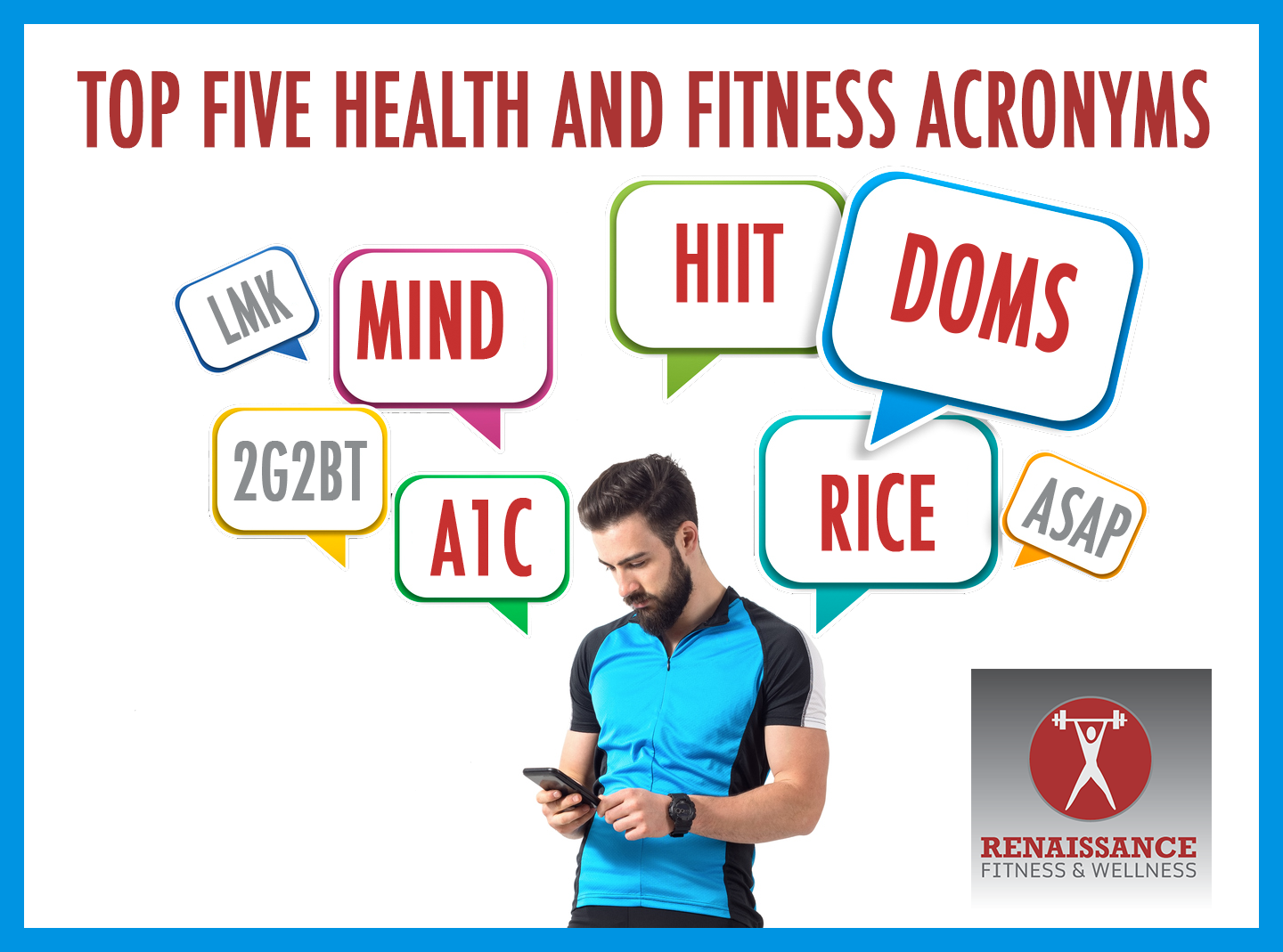
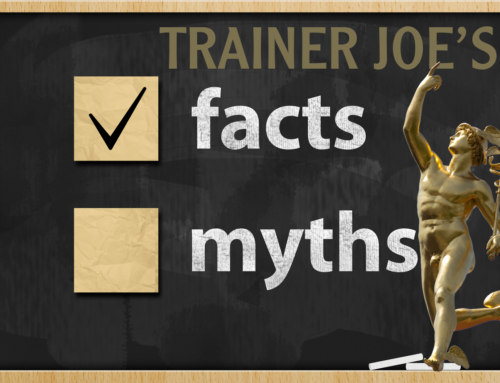

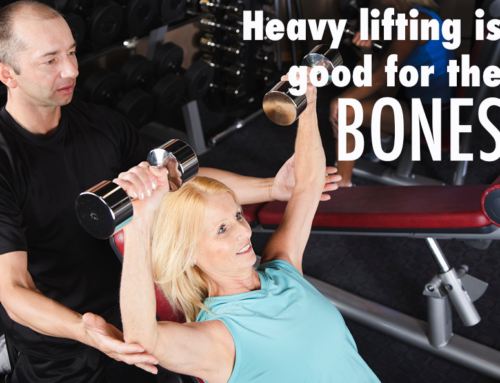
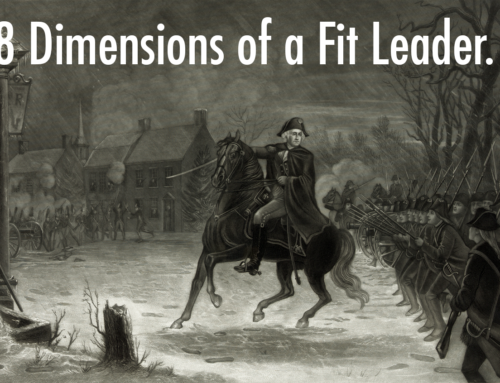
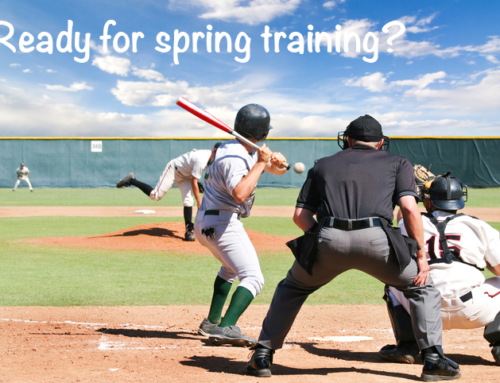
Leave A Comment
You must be logged in to post a comment.